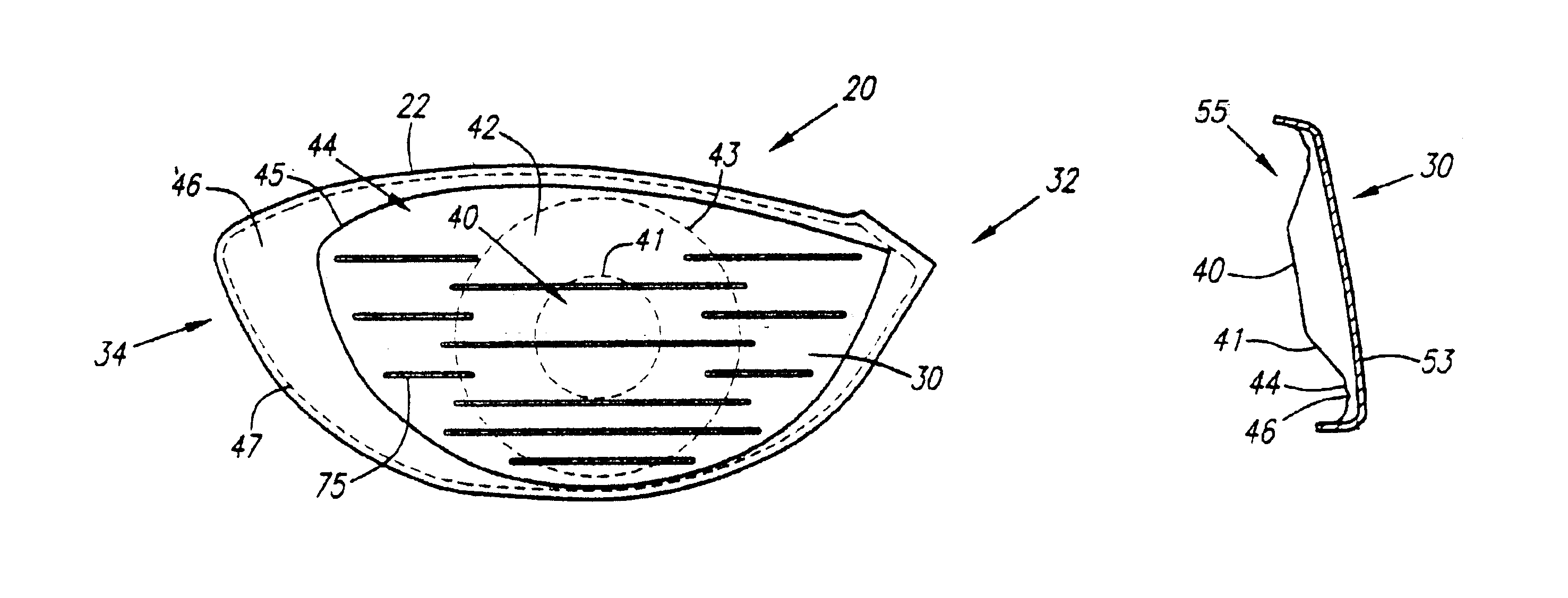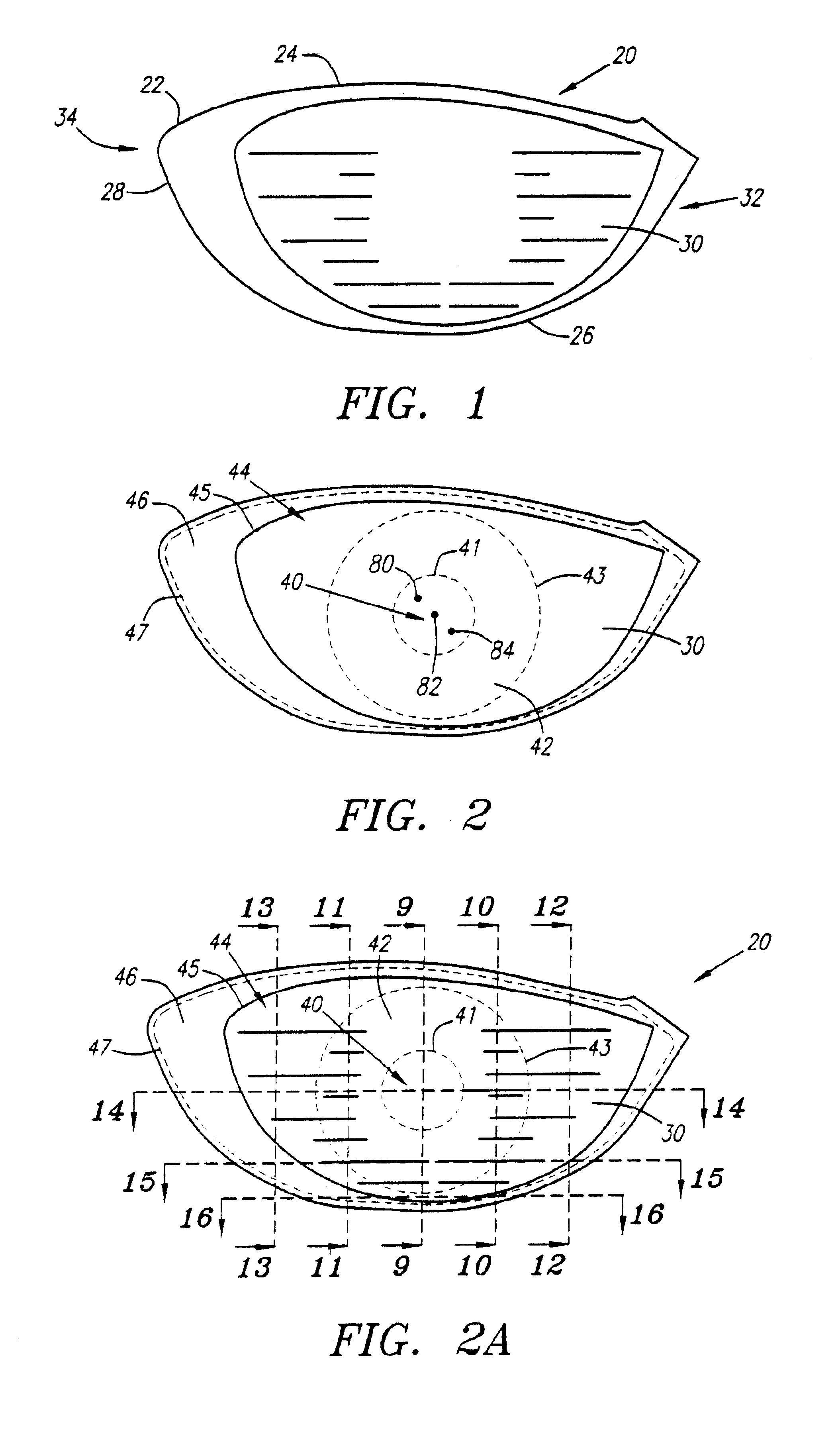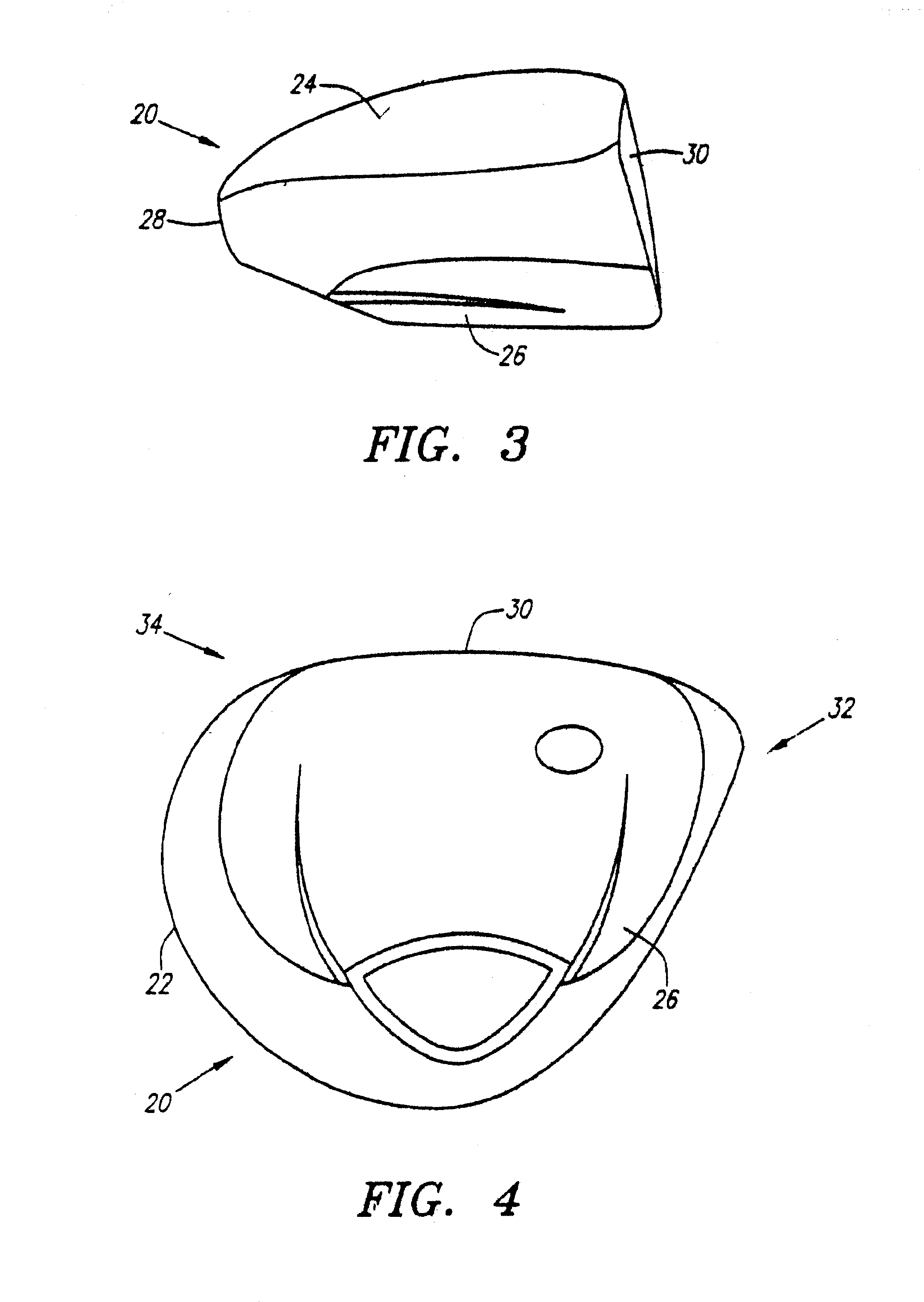Golf club striking plate with variable thickness
a golf club and variable thickness technology, applied in the field of golf club striking plates, can solve the problems of golf club failure, golf club head failure, and force that tends to produce large internal stresses in the striking plate, and achieve the effects of less golf club head weight, less over-all thickness of the striking plate, and more compliance during impa
- Summary
- Abstract
- Description
- Claims
- Application Information
AI Technical Summary
Benefits of technology
Problems solved by technology
Method used
Image
Examples
Embodiment Construction
As shown in FIGS. 1-8, a golf club head is generally designated 20. The golf club head 20 has a body 22 with a crown 24, a sole 26, a ribbon 28 and a striking plate 30. The striking plate 30 generally extends from a heel end 32 to a toe end 34 of the front of the golf club head 20. The body 22 preferably has an internal hosel 36 for receiving the tip end of a shaft, not shown, through an aperture 38. The golf club head has a body 22 that is preferably composed of a metal material such as titanium, titanium alloy, stainless steel, or the like, and is most preferably composed of a forged titanium material. The body 22 preferably has a large volume, most preferably greater than 300 cubic centimeters, and is most preferably 350 cubic centimeters. The body 22 preferably weighs no more than 215 grams, and most preferably weighs between 180 and 205 grams. The body 22 has a hollow interior 23.
The striking plate 30 is partitioned into a plurality of region 40, 42, 44, and 46, defined by line...
PUM
| Property | Measurement | Unit |
|---|---|---|
| Length | aaaaa | aaaaa |
| Length | aaaaa | aaaaa |
| Length | aaaaa | aaaaa |
Abstract
Description
Claims
Application Information
 Login to View More
Login to View More - R&D
- Intellectual Property
- Life Sciences
- Materials
- Tech Scout
- Unparalleled Data Quality
- Higher Quality Content
- 60% Fewer Hallucinations
Browse by: Latest US Patents, China's latest patents, Technical Efficacy Thesaurus, Application Domain, Technology Topic, Popular Technical Reports.
© 2025 PatSnap. All rights reserved.Legal|Privacy policy|Modern Slavery Act Transparency Statement|Sitemap|About US| Contact US: help@patsnap.com



